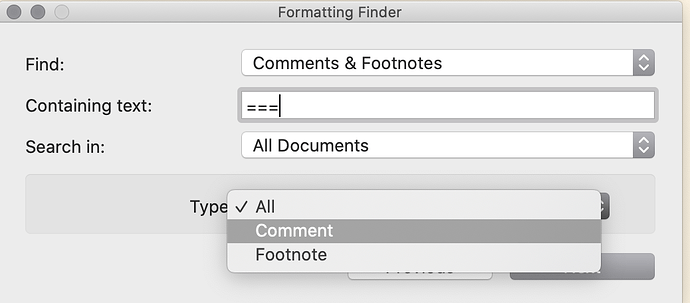I can only explain it from my own perspective.
Like Katherine writes, I use different tools for different parts of the work. And I don’t have one single workflow that is repeated over and over. It all depends on where the writing starts. Sometimes it starts as an outline in Scrivener, or maybe not even an outline but only as part of the Introduction. Other times it might start in Scapple with some juggling of ideas. Or with a sudden spur of inspiration written down in Drafts 4 on the iPhone or iPad. Or in iThoughts, mind mapping, Or maybe more likely jotting down some notes and ideas in Notability, or as a drawing in Paper by WeTransfer on the iPad. I switch a lot between Mac and iPad Pro. I even use Pages for some of my writing, on both types of devices.
And about references, it all depends on the circumstances. Sometimes I export the reference and the annotations connected to it (using an Apple Script provided by the developers) and put it in the Research part of Scrivener, especially if it is a study I don’t know that well and might want to go back to while writing. Other times I know the referenced article so well I simply invoke Papers 3’s citekey functionality and insert the citekey, or simply add a kind of temporary reference while writing “… Smith (20??)” to remind me to check it later. Or maybe I only have a vague memory of having read something somewhere but can’t recall what and where and don’t want to interrupt the writing? Then I simply write (REF??) in the text, no to get distracted, and jump into Papers 3 later on, to search for it.
My writing is never linear and it never follows a predefined workflow. And I always have several articles/manuscripts/book ideas going at the same time. Some die along the way, others just hibernate and are later revived and finished.
But I read all the time. I search for new articles (using Papers 3), get suggestions from colleagues or from ResearchGate, or from submitted manuscripts I review for journals. Sometimes just read them briefly, other times read in detail and make detailed annotations.
I do most of my writing on a Mac, but do most of my searching, reading and annotating of articles on the iPadPro. I wrote earlier that I don’t use a “reference manager”, because putting references into the writing is just the last step. To me Papers 3 isn’t a “reference manager”, it’s an “article handler” or whatever one should call it. I use it to search for, read, annotate and organize scientific articles, of which only a fraction will end up in the reference list of a published paper, perhaps 10-15%.
So having some kind of simplified “reference manager” in Scrivener would be useless to me, in the same way that I don’t want to browse the web from inside Scrivener, or have some kind of email client within Scrivener, or calendar, or to-do-list app, etc. I want specialized software, designed to be the best for one specific kind of work, not some kind of Swiss army knife apps being bad at everything.
If you want everything in Scrivener, how come you haven’t suggested that KB incorporate a statistical package, and something to produce print-ready figures? Statistical analyses and creation of diagrams are an essential part of scientific writing. 
Going back to your original statement:
It’s a question of hierarchy. To you Scrivener seems to be the top level software that should include several different specialized tools. To me MacOS (and iOS) is the top level software, and Scrivener is only one of a large array of specialized tools.
